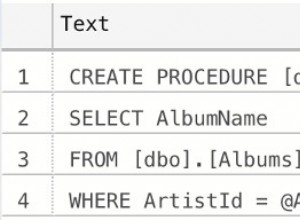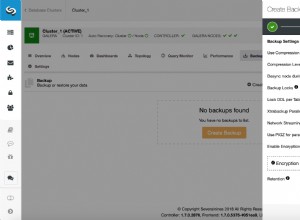Zwei Dinge haben sich seit früheren Versionen von mySQL geändert (ich verwende 5.7.10):
-
systemdwird nun anstelle vonmysqld_safeverwendet, um nach mySQL zu suchen (deshalb bekam ich die-bash: mysqld_safe: command not foundFehler - es ist nicht installiert) -
Der
userTabellenstruktur hat sich geändert.
Um also das Root-Passwort zurückzusetzen, starten Sie mySQL immer noch mit --skip-grant-tables Optionen und aktualisieren Sie den user Tabelle, aber wie Sie es tun, hat sich geändert.
1. Stop mysql:
systemctl stop mysqld
2. Set the mySQL environment option
systemctl set-environment MYSQLD_OPTS="--skip-grant-tables"
3. Start mysql usig the options you just set
systemctl start mysqld
4. Login as root
mysql -u root
5. Update the root user password with these mysql commands
mysql> UPDATE mysql.user SET authentication_string = PASSWORD('MyNewPassword')
-> WHERE User = 'root' AND Host = 'localhost';
mysql> FLUSH PRIVILEGES;
mysql> quit
6. Stop mysql
systemctl stop mysqld
7. Unset the mySQL envitroment option so it starts normally next time
systemctl unset-environment MYSQLD_OPTS
8. Start mysql normally:
systemctl start mysqld
Try to login using your new password:
7. mysql -u root -p
Referenz
Wie es unter http://dev.mysql.com steht /doc/refman/5.7/en/mysqld-safe.html ,
Das bringt Sie zu http://dev .mysql.com/doc/refman/5.7/en/server-management-using-systemd.html
wo es das systemctl set-environment MYSQLD_OPTS= erwähnt unten auf der Seite.
Die Befehle zum Zurücksetzen des Passworts befinden sich am Ende von http:// dev.mysql.com/doc/refman/5.7/en/resetting-permissions.html




